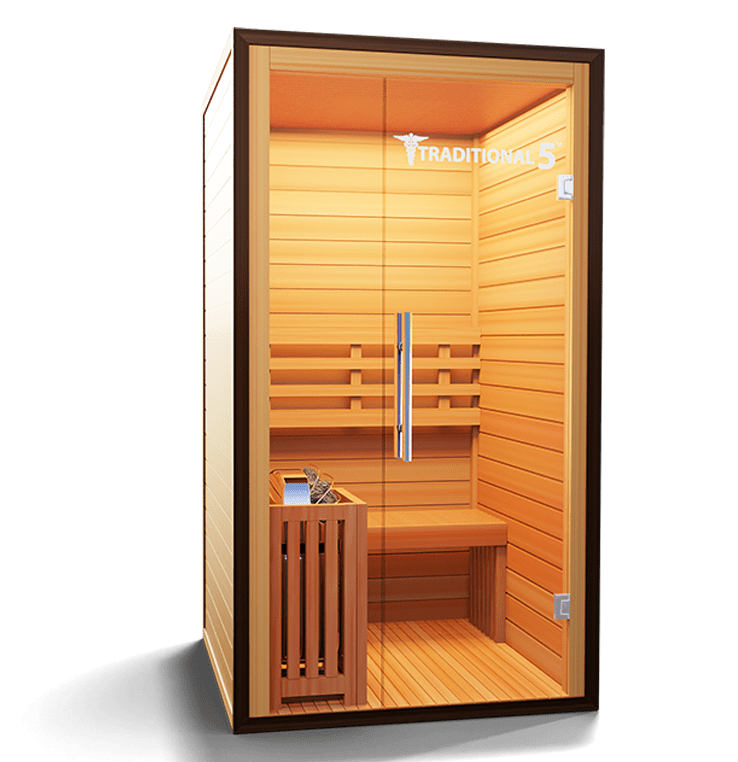Little Known Facts About Traditional Sauna.
Table of ContentsGetting My Traditional Sauna To WorkWhat Does Traditional Sauna Mean?The Definitive Guide to Traditional Sauna5 Simple Techniques For Traditional SaunaNot known Details About Traditional Sauna
Power cost savings is something to think about for people who plan on utilizing their sauna regularly. For a standard sauna, bathers normally need to wait on 30-40 minutes for the space to pre-heat before getting in. Infrared saunas, on the various other hand, generally reach their excellent temperature in about 15 minutes.That indicates that in an infrared sauna, bathers can start appreciating their sauna instantly. One difference in between the two kinds of sauna that is frequently overlooked is the social experience.

The Basic Principles Of Traditional Sauna

Attempt a sauna today and uncover a few of the incredible benefits for on your own!.

Factors such as warm tolerance, desired level of detoxification, and total health and wellness should be taken into account when making a decision which kind of sauna to make use of. Infrared saunas are a kind of sauna that use infrared light to warm the body directly, instead than heating up the air around the body like traditional saunas.
Everything about Traditional Sauna
The temperature level in an infrared sauna is normally less than in a conventional sauna, with temperature levels ranging from 120F to 150F. Infrared saunas use a series of benefits that make them an attractive option for those aiming to enhance their health and wellbeing. Several of the advantages of infrared saunas consist of: Infrared saunas make use of lower temperature levels than traditional saunas, which can make them more comfy for those who locate heats challenging to endure.
Infrared saunas have been shown to help the body remove toxins with sweating. Sweating can also help to boost skin wellness by removing pollutants and dead skin cells.
The warmth generated by infrared saunas can help to boost blood circulation and enhance blood circulation. Infrared saunas have been revealed to help lower anxiety and promote relaxation.
With their lower temperature levels, deep infiltration, and series of health and wellness advantages, infrared saunas are a great means to unwind, relax, and enhance your overall health and wellness. Typical completely dry saunas have been around for centuries and are still popular today. They are commonly heated up with wood, gas, or power and have low humidity degrees.
Traditional Sauna - An Overview
There are several benefits to making use of a typical completely dry sauna. Right here are a couple of: Relaxation: The heat and reduced humidity in traditional completely click here for more info dry saunas can help loosen up the muscular tissues and lower stress degrees. Detoxing: Sweating in a sauna can help remove toxic substances from the body, which can boost general health and wellness.
When it concerns saunas, there are two main types of heating approaches: conventional and infrared. Traditional saunas use heated air to warm the body, while infrared saunas use infrared radiation to permeate the skin and warm the body from within. One of the major distinctions between the 2 techniques is the kind of warmth they produce.
Since infrared radiation passes through the skin extra deeply, it can produce a similar sweat reaction at reduced temperatures. Another difference is the way the heat is distributed. Conventional saunas warm the air, which then heats up the body via convection. Infrared saunas, on the various other hand, warmth the body straight through radiation.
In regards to energy effectiveness, infrared saunas are typically a lot more efficient than typical saunas because they call for less power to operate. They also warm up quicker, so they can be utilized for shorter sessions. Traditional Sauna. When it concerns the results on the body, both sorts of saunas have been revealed to have advantages
3 Easy Facts About Traditional Sauna Explained
Infrared saunas have been shown to have comparable benefits, along with potentially aiding with detoxing, skin health, and immune feature. In general, the option between a traditional or infrared sauna comes down to personal choice and individual needs. Conventional saunas may be much better for those who prefer greater temperature levels and a more intense sweat action, while infrared saunas might be much better for those that desire an even more check it out gentle and efficient heat this post treatment.
Both kinds of saunas use distinct benefits and downsides that must be taken into consideration before making a decision. The choice in between an infrared sauna and a standard completely dry sauna mainly relies on personal preference and the desired advantages. Those who like a more comfy, reduced temperature level atmosphere may like an infrared sauna, while those who are looking for extreme warmth and a standard sauna experience might favor a conventional dry sauna.
Here are some safety pointers to bear in mind when making use of infrared and typical dry saunas:: Saunas can create too much sweating, leading to dehydration. It is necessary to drink lots of water before, throughout, and after sauna sessions to stay hydrated.: It is recommended to restrict sauna sessions to 20-30 mins to stay clear of overheating and dehydration.
 Molly Ringwald Then & Now!
Molly Ringwald Then & Now! Jennifer Love Hewitt Then & Now!
Jennifer Love Hewitt Then & Now! Tina Majorino Then & Now!
Tina Majorino Then & Now! Kerri Strug Then & Now!
Kerri Strug Then & Now! Nicholle Tom Then & Now!
Nicholle Tom Then & Now!